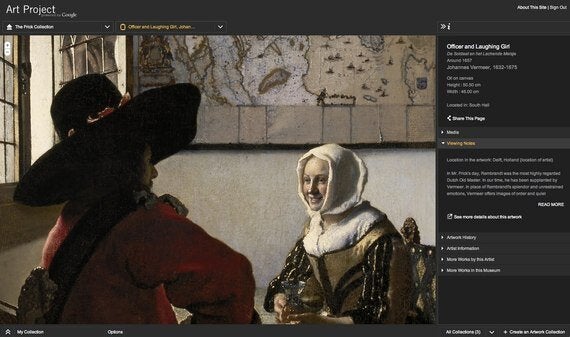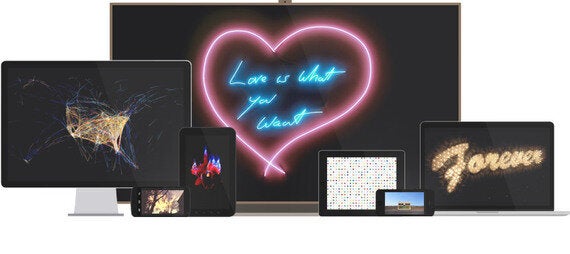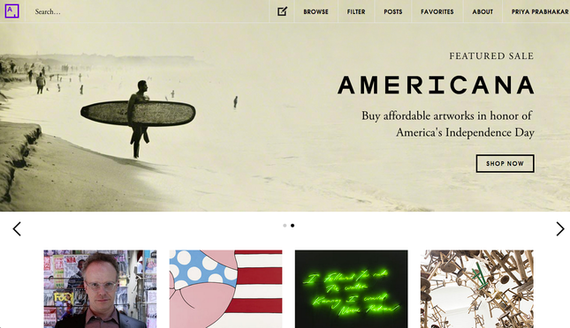As a museum curator, I have over the years been consistently privy to conversations around the digital context's enveloping power. However reflecting on these discussions it seems to me that they are far too often weighed down by a kind of institutional FOMO (Fear of Missing Out). Are we fully relaying to the world the extent of our work? How can we galvanize new audiences, funders, and solidify our reputation amongst the international community? I wanted to discuss some of these points with an artist.
Here I speak to writer and artist Jesse Darling (JD) and get her/his take on the issues at stake.
Omar Kholeif
I can now buy Jasper Johns, Mike Kelley, Gilbert and George or Helen Frankehaler on Amazon Fine Art. I can buy a digital edition of a Tracey Emin on Sedition, pop it onto a plasma screen at a house party and call myself a collector, having spent no more than 50 pounds. I can supposedly experience a museological reproduction of a painting on Artsy.net or swim through the annals of history on Google Art Project. Beyond the binary good vs. bad, authentic vs. in-authentic debate, what do you think these trends suggest about our art culture today?
JD
Despite being a rarefied fortified glass castle on a hill on an island surrounded by the horrors of war, the art world is still a reflection of the 'real world' and in the real world images have become absolutely reproducible and slippery. Plus, everything we see online is functionally an image, including the text you're looking at now. So it seems like images have lost their mystique and power a bit through excess of production and circulation, and of course the art market is all about artificial scarcity and the stamp of authenticity. It's a particular business model tied up with the cult of the maker, and it functions in much the same way as luxury brands, Stradivarius violins and artisanal small-batch foodstuffs at the farmer's market. In the age of mass automation, when so much of artistic production has become outsourced to softwares or fabricators in a turn toward the managerial (every artist wanna be the CEO of his own brand and company) I feel like the idea of the [artist's] gesture is starting to re-emerge as a strategy of resistance but also, inevitably, as a strategy of marketability. For me the gesture could be a resource for resisting the convenient disappearance of the body (when only certain bodies get to disappear) and the homogenisation of the aesthetic field under 3D modeling, but as I say, it's also tied up in that whole Benjamin thing about aura and I guess that's what pushes the prices up. In general I think there's only so much to be said about the internet an sich, either formally or conceptually, and most of it has been said and done several times already while the institutions make clunky attempts to catch up with what is misunderstood as 'the discourse', when in fact it's just the general modus operandi and no more or less than that.

Image: Google Art Project
Omar Kholeif
Can the internet really be a meaningful space for the discussion of art? I often find myself engaging in heated political discussions on twitter but I am constrained by the 140 characters. It always ends up being a shallow act of competitive snark attacks, very often, I find that these provoke binary positions, i.e. you are either for or against a cause. There is no room for debate. What's your position on this?
JD
My position is to only do heated political discussions irl and avoid empirical arguments whenever I can. I know what you mean about the binaries, but when lots of people are weighing in - on Twitter, for example - I guess the positions tend to polarize just to keep things coherent. But I don't like binaries so I don't even go there. And Facebook is such a crowded space for an argument - like shouting at each other across a packed train at rush hour. As good neoliberal subjects we live in public all squashed up around Blue Zuck's water cooler, but between consenting adults the real beef tends to be consigned to the interiority of email. It's an evolving etiquette. I feel like the rules are pretty fluid, tacit maybe - until a transgression emerges and everyone starts acting like it's a breach of protocol. But these protocols are of course particular to certain groups or demographics, and their shared social values, as with any other public space.

Image: Sedition Art
Omar Kholeif
I feel that there is too much showing off and posturing that occurs in the social sphere online. But I can't help but be sucked into it - What do you say to that? Do you think we start to mirror and reflect each other, or are we all performing for ourselves? I can't help but return to Rosalind Kraus's aesthetics around narcissism and video here.
JD
I don't know much about Kraus, but I don't think it can be described as narcissism, exactly. Perhaps some of it is narcissistic, for sure; some people are. I guess virtuality allows us to present a curated selection of attributes, or show a preferred face to our own, but the practice of posting up aspects of one's life or person is more complicated than that. I think especially for women, queer bodies and people of colour, whose image has historically been the object of an appraising, oppressive gaze - a hierarchical gaze - the performative self[ie] online is part of a longer social process of mapping the marginal body into space, a networked space that posits the identifiable self as part of a primary narrative from which it has been excluded. Or something like that. Pix or you didn't happen. It's a way of manifesting one's existence, proving that you are alive, and that you still have a certain agency. That's not narcissistic; sometimes, under certain conditions, it can be a way of surviving.

Image: Artsy.net
Omar Kholeif
Sometimes I feel that we are in a perpetual state of crisis: social uprising gone wild - hyperlinking to other social uprisings to no end. But I also don't think we could ever go back to a different state. What are your thoughts on this?
JD
The Romans had a god called Janus who ruled transitions, ends and beginnings, and therefore also thresholds, doors, passages, trade and exchange. Like many of us who use social media he had two faces, the better to be able to see the past and the future at once. Janus also presided over war and peace, or more accurately, the dialectic of war and peace. The doors of his temple were left open in wartime - which was most of the time, just as it has been for the rest of recorded history - to allow the safe return of those at war. In the rare calm times when nobody was fighting, the doors were left shut, to keep the peace. I think about Janus and his flows sometimes when I think about networked militarism, activism, sociality etc. We have never really known peacetime, but crisis is a cultural commodity that seems to accompany historical transitions, and certainly the whole concept of crisis is a big part of the contemporary. But you know? We could never go back to a different state, as you put it - I don't believe we've known any other.
You Are Here: Art After the Internet edited by Omar Kholeif and featuring new writing by Jesse Darling is available now.